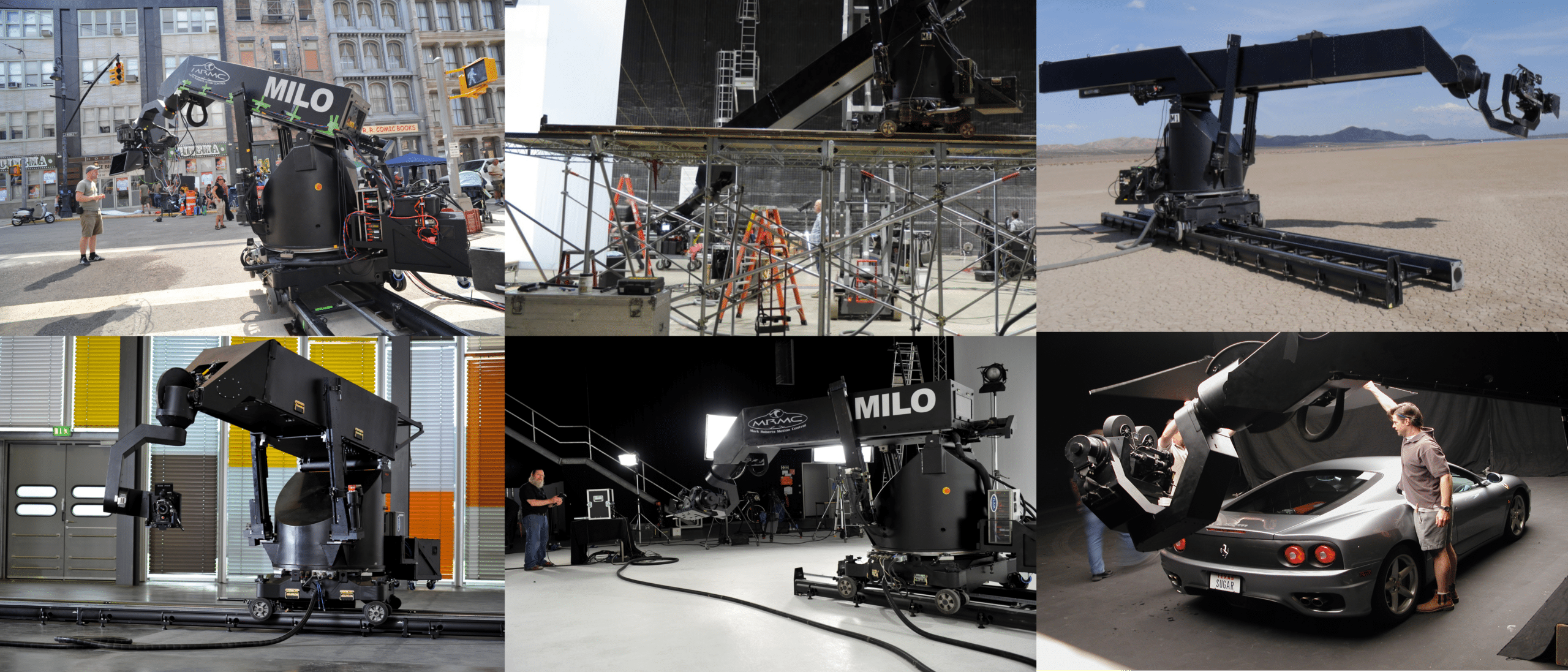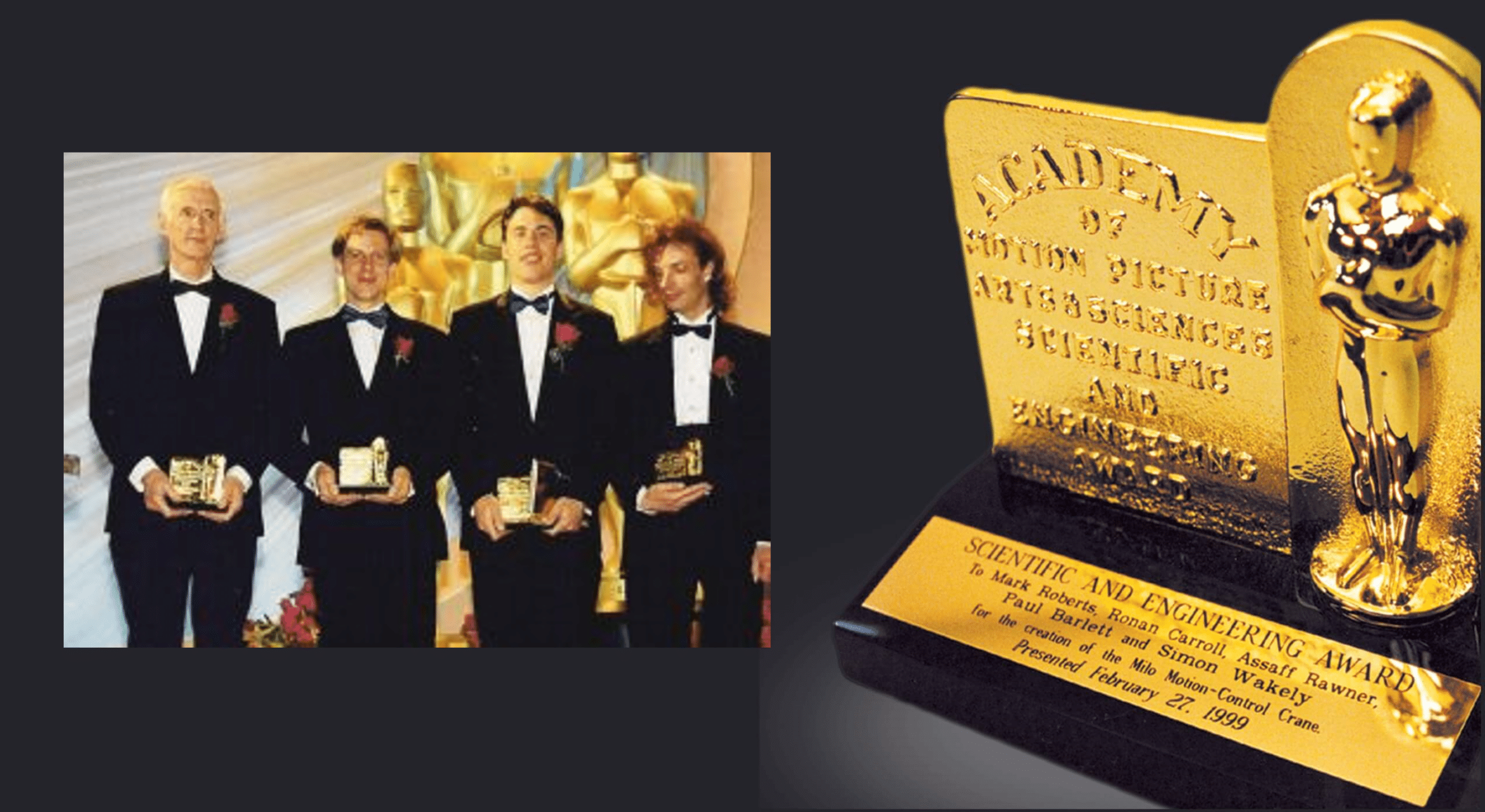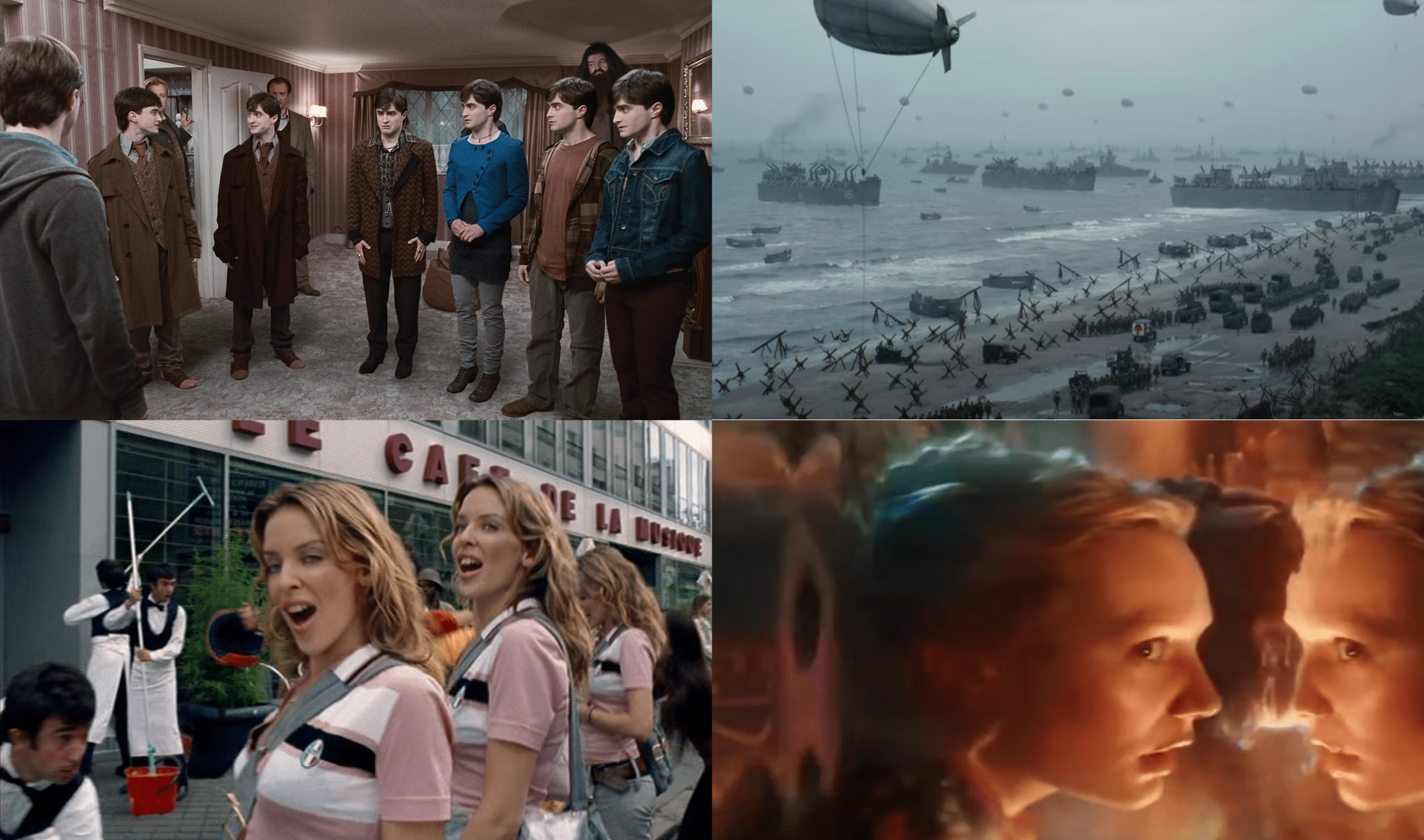30 Years of the Milo
2024 marks a significant milestone in the history of MRMC as it is 30 years since we launched the groundbreaking Milo motion control rig back in 1994. It has become the industry standard for precise and repeatable camera movements in film and television production. The Milo broke the mould of traditional motion control systems as it introduced new advanced robotics that allowed for more complex, repeatable camera moves with higher precision than had been seen before. Stable enough for macro work, and fast enough for live-action shooting, it has remained a game-changer in the film industry.
2024 marks a significant milestone in the history of MRMC as it is 30 years since we launched the groundbreaking Milo motion control rig back in 1994. It has become the industry standard for precise and repeatable camera movements in film and television production. The Milo broke the mould of traditional motion control systems as it introduced new advanced robotics that allowed for more complex, repeatable camera moves with higher precision than had been seen before. Stable enough for macro work, and fast enough for live-action shooting, it has remained a game-changer in the film industry.
A Brief History
Milo was the portable version of the Cyclops, released a year earlier, which was renowned as the largest, fastest, most stable, and precise motion control system in the world. Although other motion control systems were in use at the time, including some portable ones, the Milo stood out as being in a league of its own, whether used indoors or outdoors. London was the hub for high-end commercials and visual effects, and both rigs quickly became best sellers among post-production houses and motion control rental companies in London and across Europe. Most feature films had their visual effects done in London, with the Milo being used in many famous movies. However, it initially struggled to gain acceptance in Hollywood, where the industry was dominated by homebrew rigs that were unreliable, slow, and less stable, lacking advanced software features like Target Tracking that made complex moves simple to program with the Milo. The breakthrough for Milo came after MRMC’s owners established a separate rental company in LA called Camera Control. One day, the producers of Dante’s Peak called, needing a motion control rig. The Milo arrived on set and demonstrated its superior capabilities compared to the existing systems. It showcased its ability to scale moves by combining scaled models with live-action scenes, allowing perfect compositing of the two. Word spread, and within a couple of years, the Milo was in constant demand in LA as well, revolutionizing the industry and eventually leading to an Academy Award.

Innovation In Motion
The ergonomic design and quick set-up time of the Milo allow it to be used in a variety of environments, from studio setups to on-location shoots. It is capable of executing intricate camera movements with remarkable accuracy. This makes it ideal for visual effects work where consistency across multiple takes is crucial. It is unrivalled for its stability, flexibility, and ability to handle a variety shots. The ‘Target Tracking’ feature built into Flair, the user interface. The Milo has additional axes that many rigs don’t in the ‘extend’ and the ‘angle’ which carry the camera to positions previously unattainable on other rigs. It is so precise it can shoot from a 2 meter a second tracking shot to a 100-millimeter macro going through 1-2-1 magnification and producing smooth movements at those speeds. Its rigidity allows for repeat pass compositing that is frame-accurate at UHD resolutions. Its additional axes allow it to reach from the ground to to heights of around 4.1m with a standard arm and higher with the Long Arm or Titan Arm, up to 9m.
Academy Award Winning Credentials
In 1999 we were enormously proud to be awarded a Scientific and Technical Academy Award for the design of the Milo and the motion control software Flair. The award recognises the individuals whose contributions have greatly advanced the technological aspects of film-making. From MRMC and associated partners, those people were Mark Roberts, Assaff Rawner, Ronan Caroll, and Simon Wakley whose impact on the Industry was duly recognised.

Notable Film, TV & Commercial Work
The Milo has made many significant contributions to notable films and television projects over the years, and started its feature film credit list very early with films like, The Borrowers, Lost in Space, Babe, 101 Dalmations, . For Saving Private Ryan, it was used for the iconic D-Day landing shots showing a huge panorama of the landing beach from the top of a hill. The Milo was actually in shot from some of the other cameras being used at the same time, so it was dressed up to look like a canon on the hill so it wouldn’t be seen. It was used in all the “Harry Potter” films (2001-2011) which showcased the precision of the Milo rig in various sequences, particularly those involving intricate visual effects such as the ‘7 Harry’s shot’. Similarly, in television, the Milo rig was instrumental in “Game of Thrones” (2011-2019), enhancing the show’s high production value and complex visual effects. And to prove it is still as relevant as ever It was also used in the upcoming ‘Beetlejuice Beetlejuice’ starring Michael Keaton.
In Spider-Man (2002), the Milo rig was used for iconic effects like the “Spidey Sense” sequences, face replacements, and background plates. It played a crucial role in The Aviator for miniatures, crowd replication, and high-speed flybys past the main talent. In Bullet Train, Milo was essential for dynamic action shots, and in Once Upon a Time in Hollywood, it was used for miniatures and intricate camera movements. It was also integral to the filming of the stop-motion animation feature Wallace and Gromit’s ‘The Curse of Were-Rabbit’ where 3 Milo rigs were used in the production.
Beyond films and TV shows, the Milo rig has been a staple in high-end commercials and music videos, allowing directors to create visually stunning content. It has been utilised in music videos for artists such as Oasis, Megan Thee Stallion, Madonna, Kylie Minogue, Jewel, Adele, Sinéad O’Connor, Kendrick Lamar (notably in “Humble”), OutKast (in “Hey Ya”), and Faith Hill. In the realm of advertising, the Milo rig has been employed by prestigious brands like Rolex, McLaren F1, Gucci, and Nike, contributing to the creation of visually striking and memorable commercials. Overall, the Milo has been used in thousands of productions worldwide, including some remarkable locations. Notably, it was once airlifted by helicopter to the roof of a skyscraper to shoot scenes over the edge of the building!

“The shooting schedules were entirely worked out around the availability of the Milos because of the flexibility and range that they possess … other motion control equipment is just not capable of moves of such complexity”
Aardman Animation.
Looking To The Future
Over the years, MRMC continued to enhance the Milo with software upgrades and hardware improvements, maintaining its position at the cutting edge of motion control technology. The success of the Milo paved the way for other motion control systems, but it remains a benchmark in the industry due to its reliability and the quality of its results. It was once seemingly impossible to conceive that there could be an improved version of this rig, but 2024 will yield an update to this iconic cinema robot. Look out for more information over the coming weeks!
